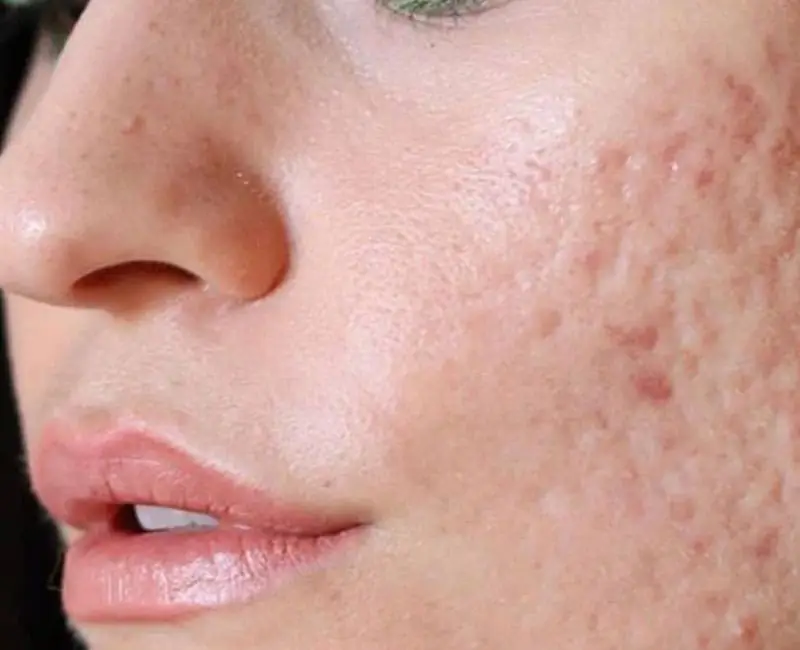Acne is a common skin condition that affects millions of people worldwide. While acne itself can be frustrating, the scars it leaves behind, especially deep acne scars, can be even more distressing and long-lasting. These scars can significantly impact one’s self-esteem and quality of life. This comprehensive guide explores the types, causes, and treatments for deep acne scars, helping you understand how to manage and improve these persistent skin concerns.
Here at FMS Skin and Hair Clinics, after the thorough examination by the dermatologist, we offer a customized treatment depending on the extent and the severity of the scars.
Address:
Door No. 8-2-293/82/A/725/A, Beside FMS
INTERNATIONAL DENTAL CENTER Road No. 37,
Hitech City Rd, near Daspalla Hotel, CBI Colony,
Jubilee Hills, Hyderabad, Telangana 500033
Email: [email protected]

For MILD DEEP ACNE SCARS – For ice-pick scars/ rolling scars – multiple sessions of TCA CROSS is done followed by either MNRF and Fractional laser like Erbium YaG laser or Co2 laser is done.
For MODERATE DEEP ACNE SCARS – For Deep scars like box car scars – multiple sessions of MNRF and fractional laser like Erbium laser/ Co2 laser is done
For SEVERE ACNE SCARS – for deeper boxcar/ rolling scars – few sessions of subscision is done followed by MNRF and Fractional lasers. If required, punch elevation or punch excision is done followed by fractional lasers or MNRF sessions for a better result.
Deep acne scars are the result of severe acne lesions that penetrate deeply into the skin, causing significant damage to the underlying tissue. When the skin attempts to heal itself, the process can lead to an overproduction or underproduction of collagen, the protein responsible for skin strength and elasticity. This imbalance in collagen production results in different types of scars.
Types of Deep Acne Scars
Deep acne scars can be categorized into three main types, each with distinct characteristics:
Ice Pick Scars:
Ice pick scars are narrow, deep, and sharply defined. They resemble small, deep holes or punctures in the skin, similar to marks made by an ice pick. These scars occur when a deep, inflamed blemish, destroys skin tissue. The skin’s attempt to heal leaves a deep, pitted scar.
Boxcar Scars:
Boxcar scars are also deep, but they are broad, box-like depressions with well-defined edges. They are wider than ice pick scars and have a rectangular or oval shape. These scars form when an inflammatory breakout destroys collagen and tissue, resulting in a loss of skin structure.
Rolling Scars:
Rolling scars are broad depressions with rounded, sloping edges, giving the skin a wave-like or undulating appearance. Rolling scars develop due to damage beneath the skin’s surface. Fibrous bands of tissue is formed creating rolling or uneven texture. They are usually shallow but can be deep.
Causes of Deep Acne Scars
Several factors contribute to the formation of deep acne scars, including:
Since the scar has already occurred, it is best to get treated at dermatologist clinic for better outcome. Effective treatment of deep acne scars often requires a combination of approaches tailored to the severity and the specific type of scar. At-home treatments can help in the prevention of the scar formation in future.
At-Home Treatments
At Clinic Professional Treatments
Selecting the appropriate treatment for deep acne scars depends on several factors, including the type, severity, skin type, and individual preferences. A consultation with a dermatologist is essential to develop a personalized treatment plan. Different treatments target specific types of scars. Deep and extensive scars may require more intensive treatments, such as TCA CROSS, subcision, laser therapy etc. Deep acne scars can be a persistent reminder of past breakouts, but with the wide range of treatments available today, significant improvement is possible. Hence a combination approach is advised to achieve better results.
Email: [email protected]